
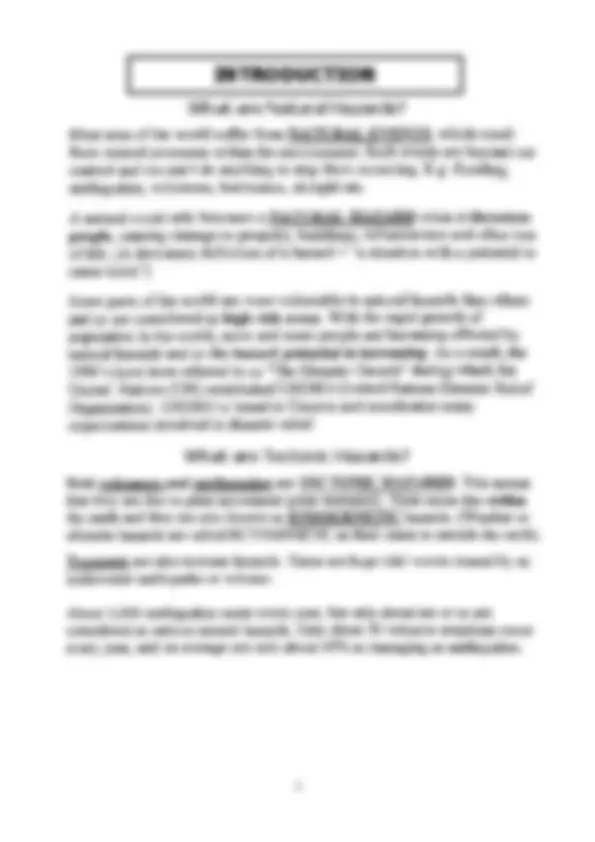
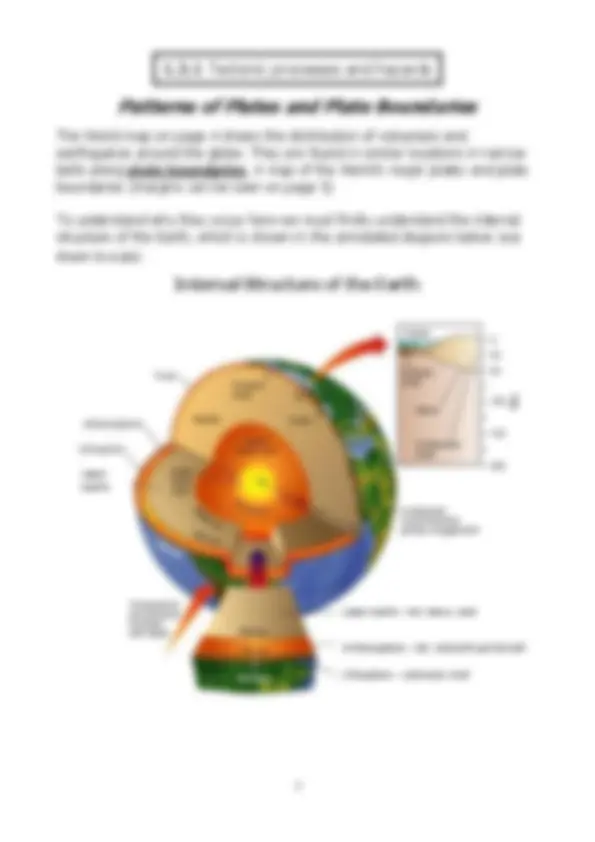
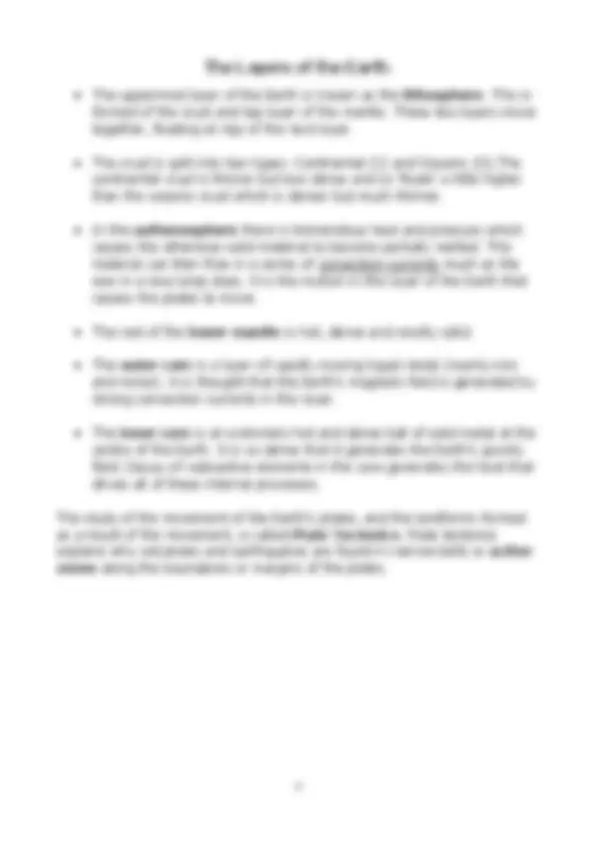
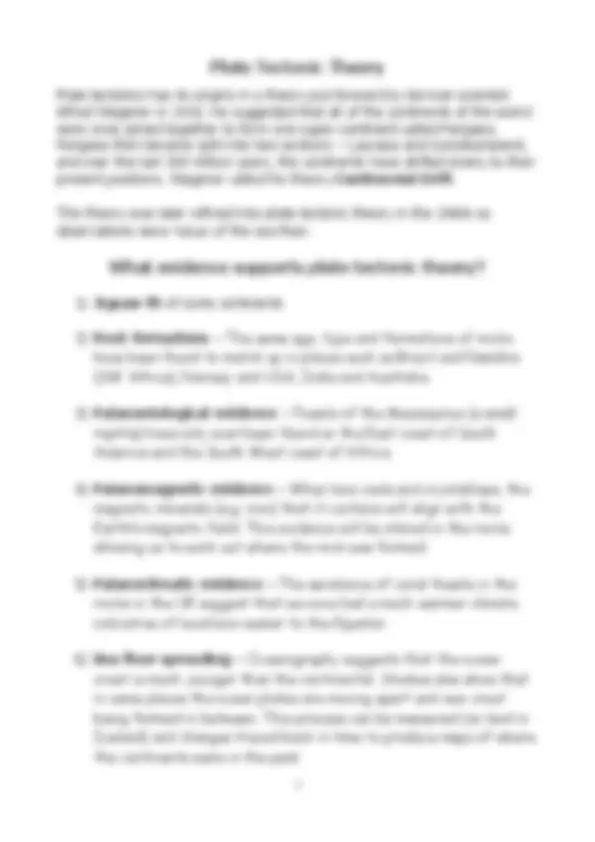
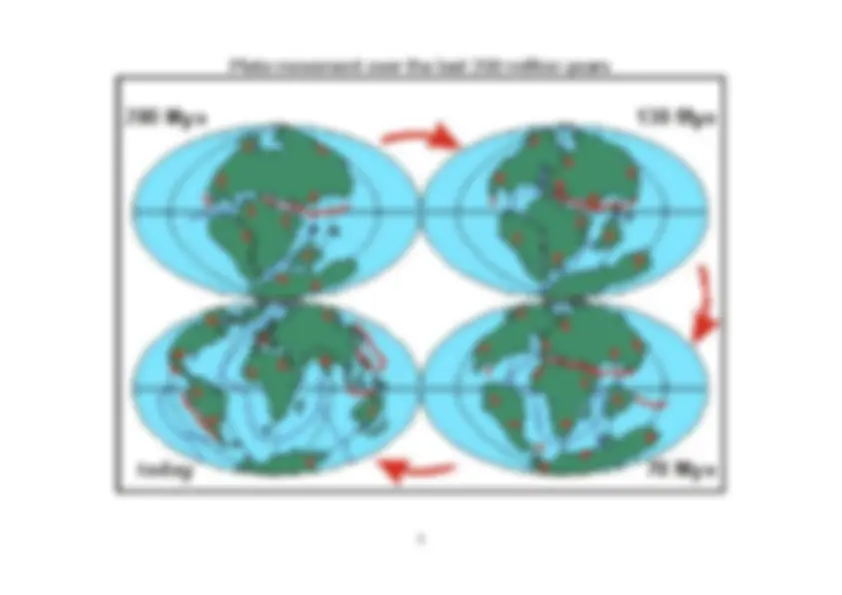
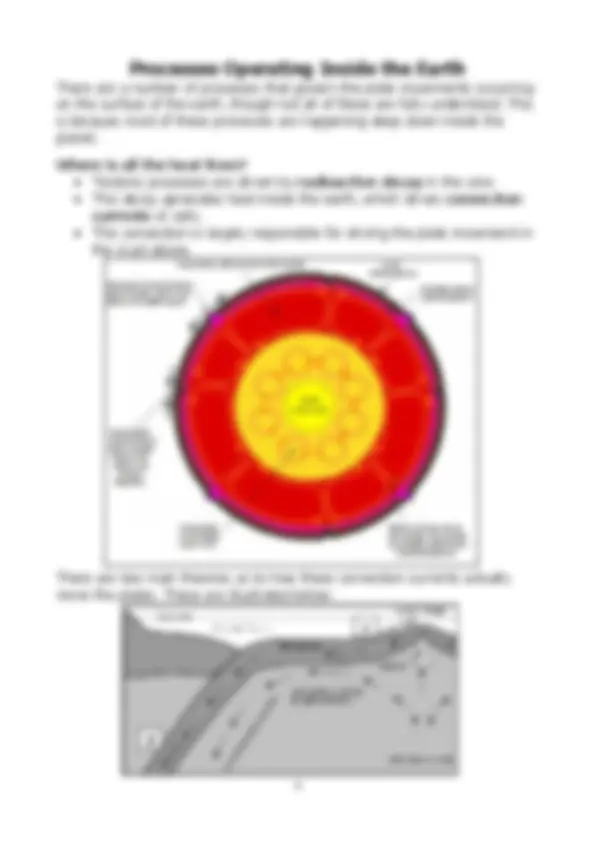
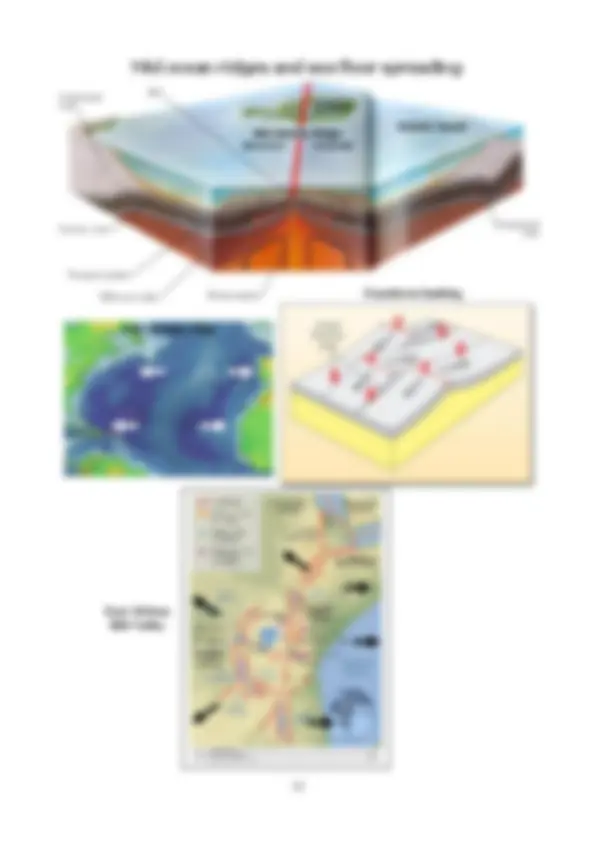
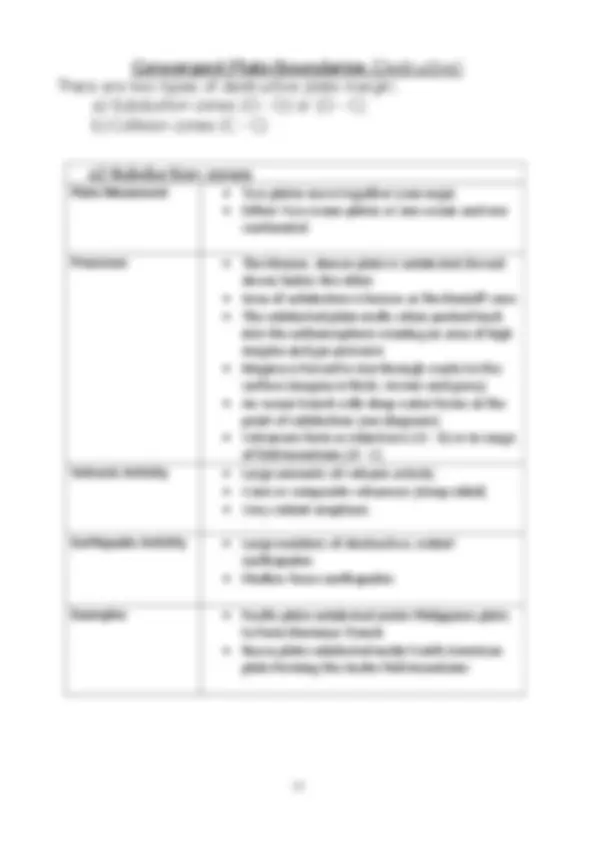
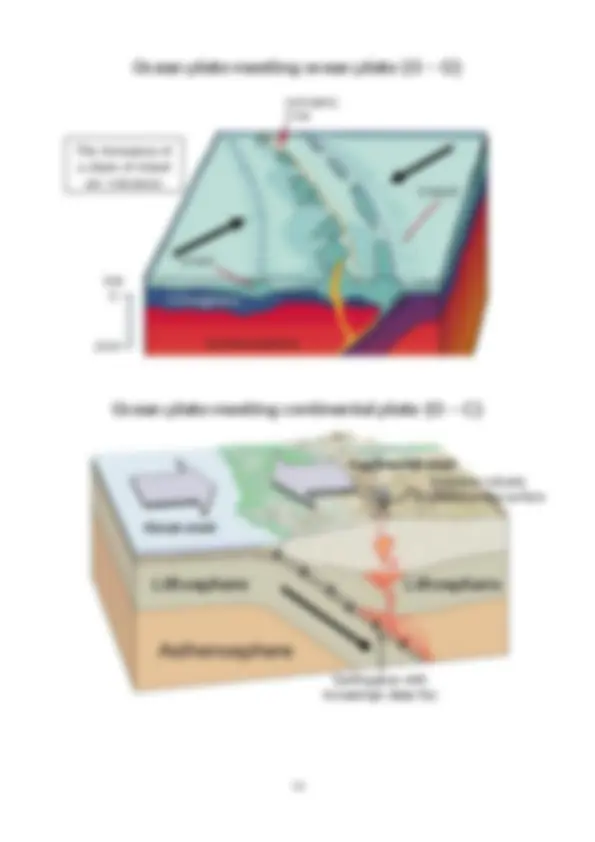
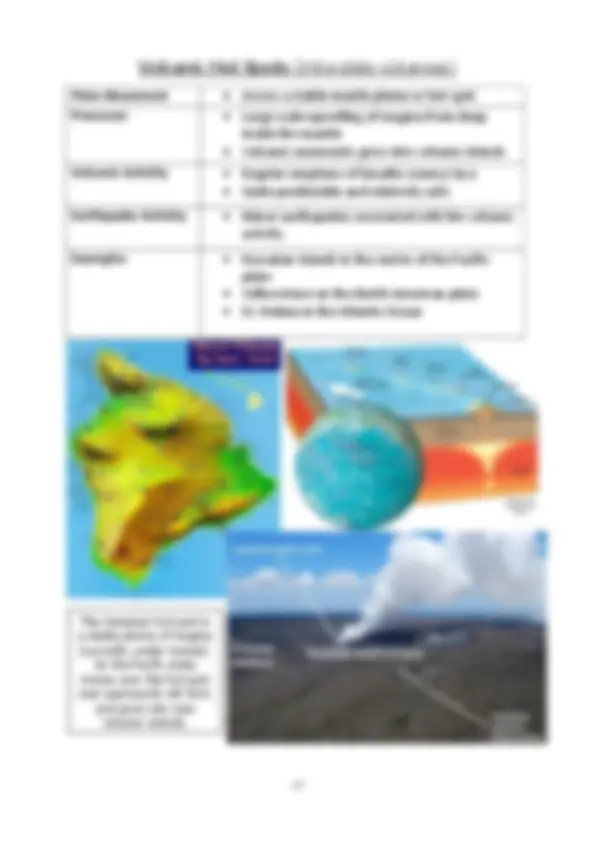
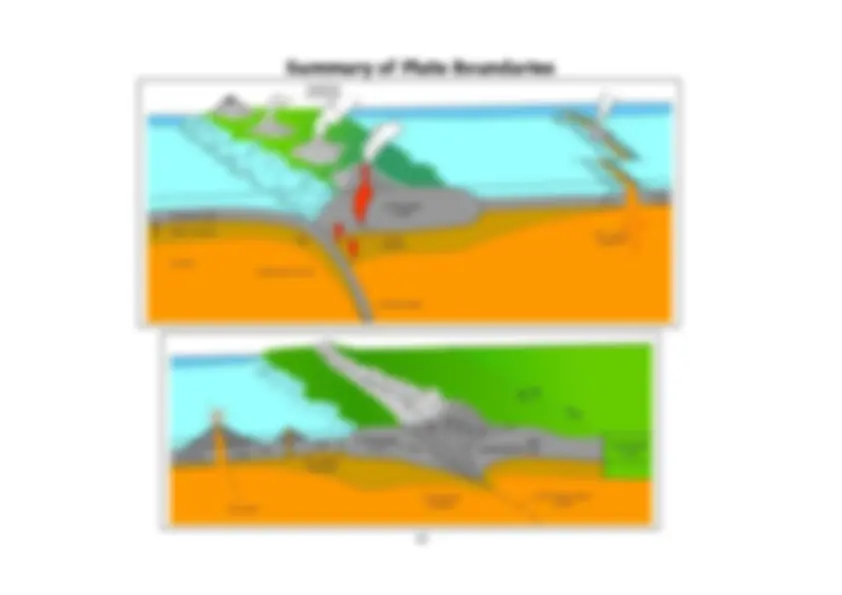
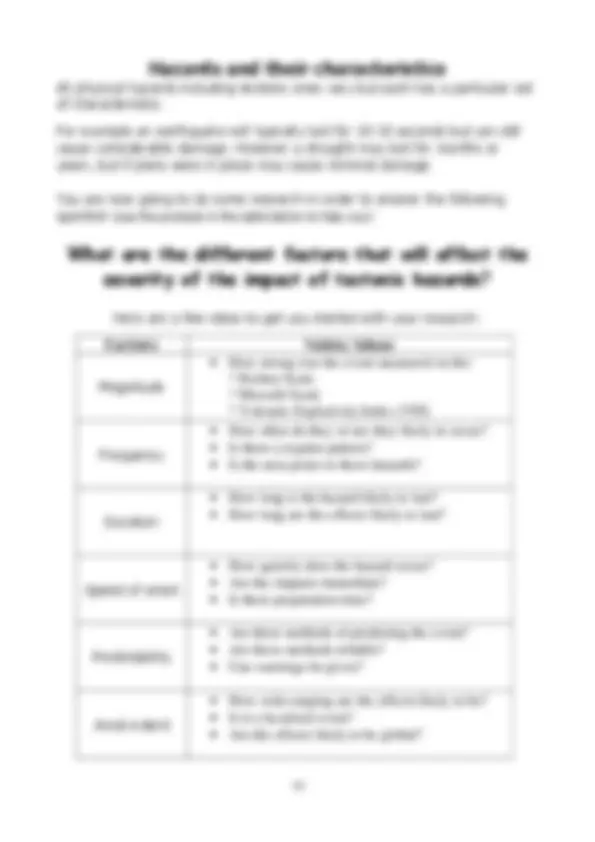
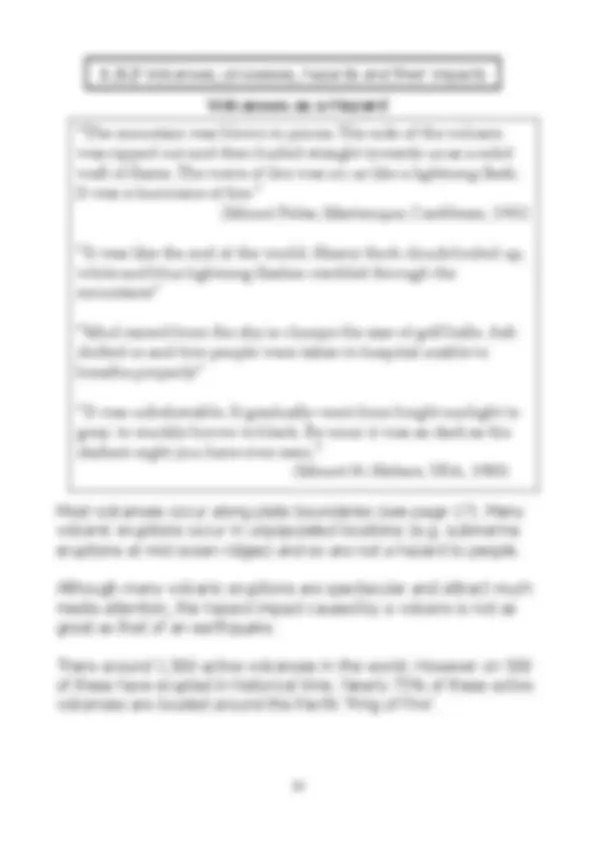
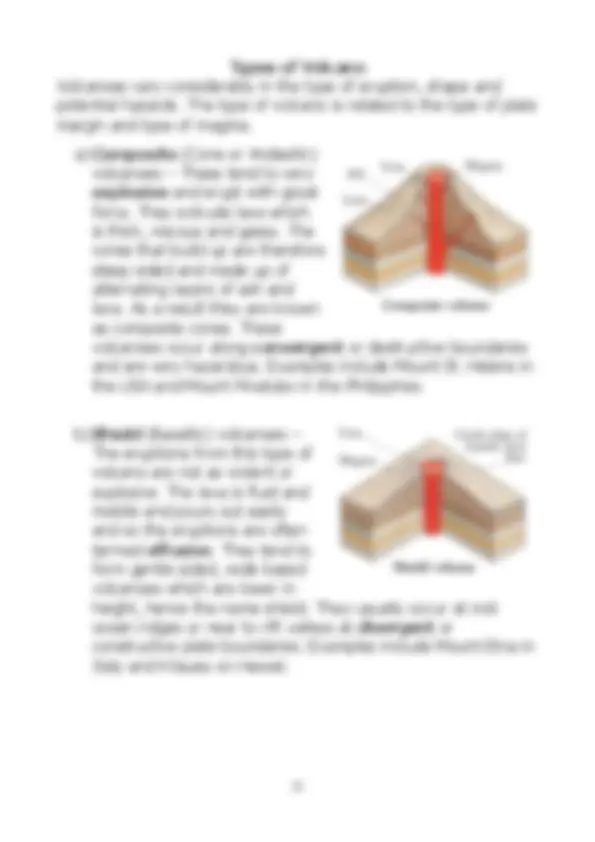
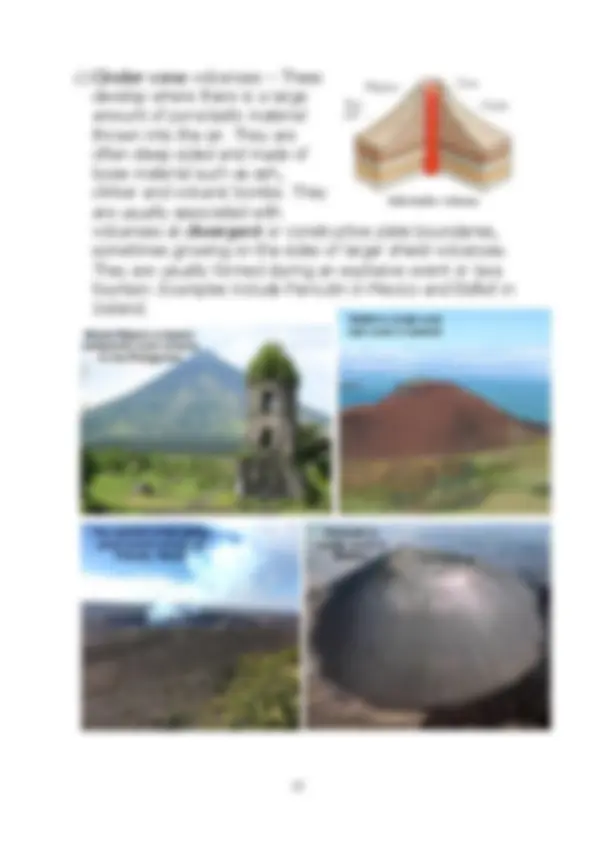
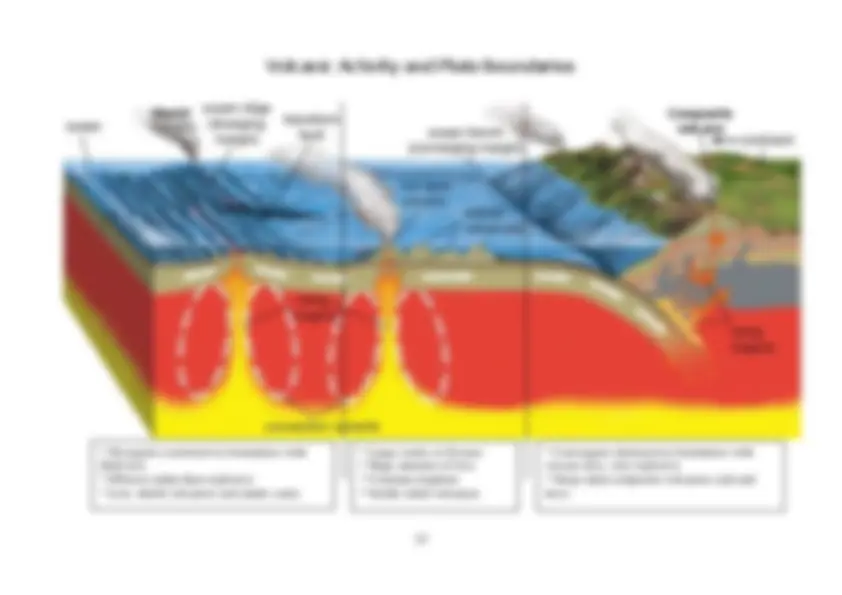
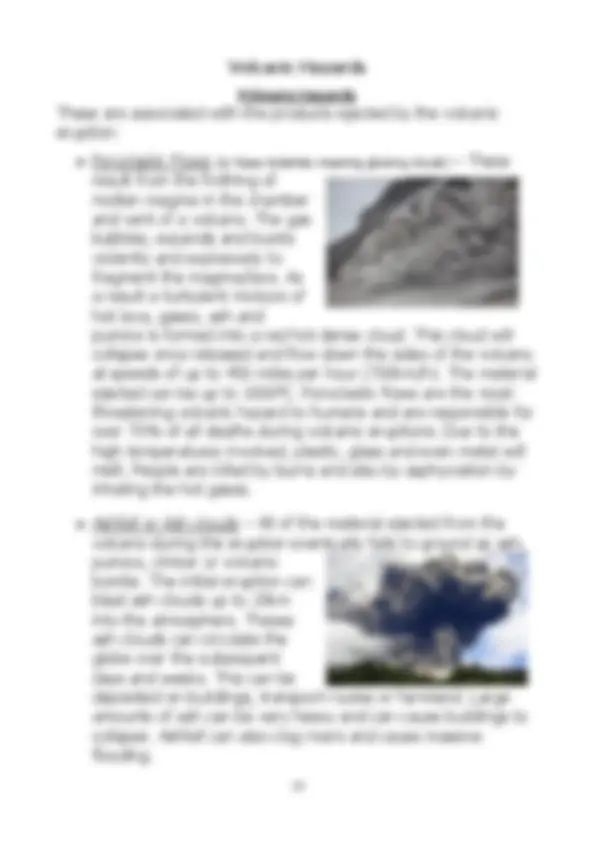
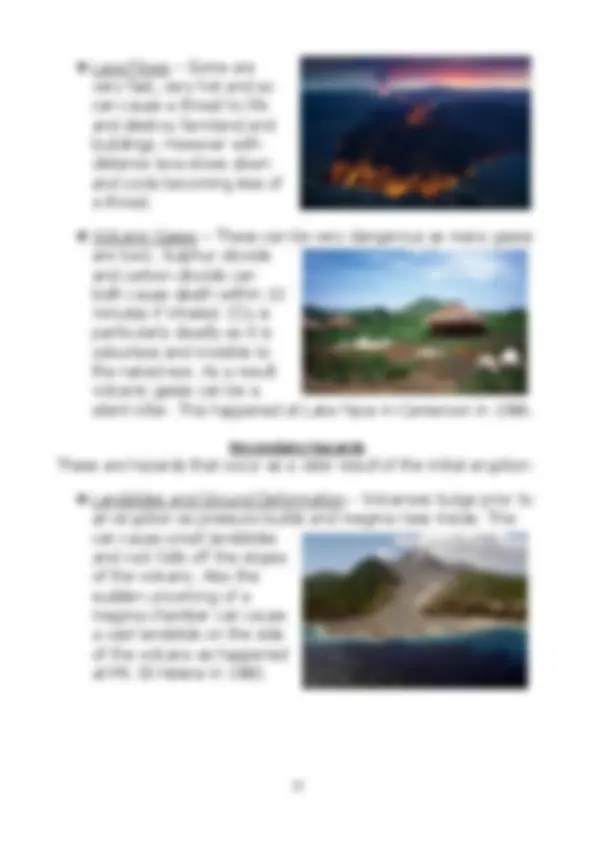
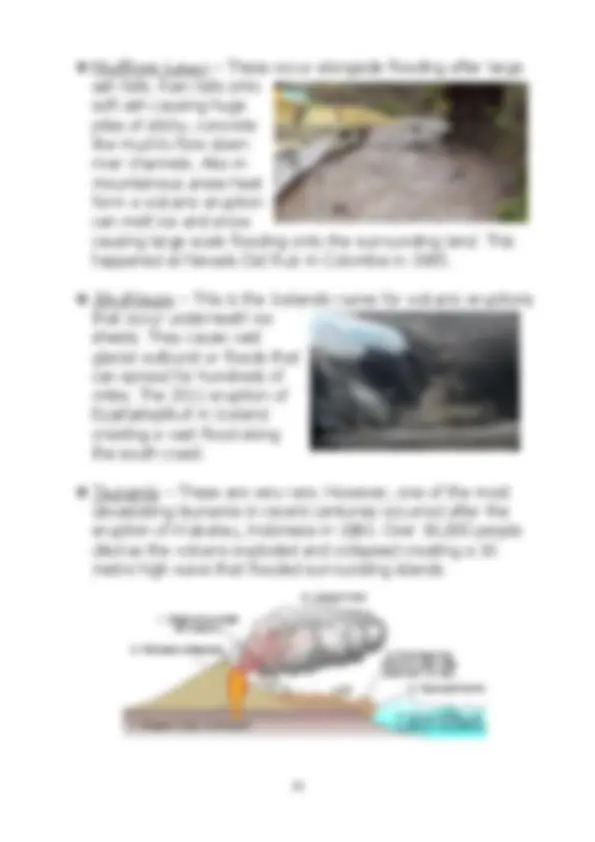
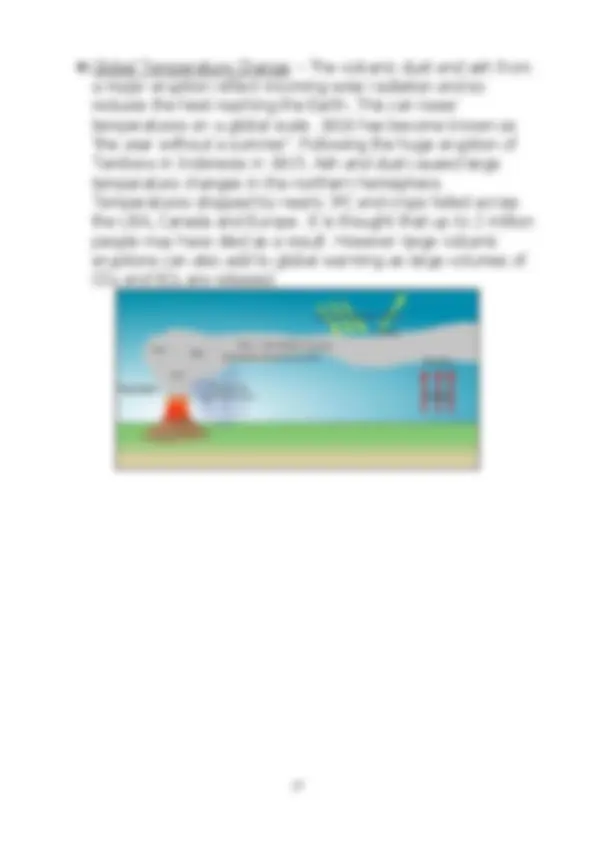
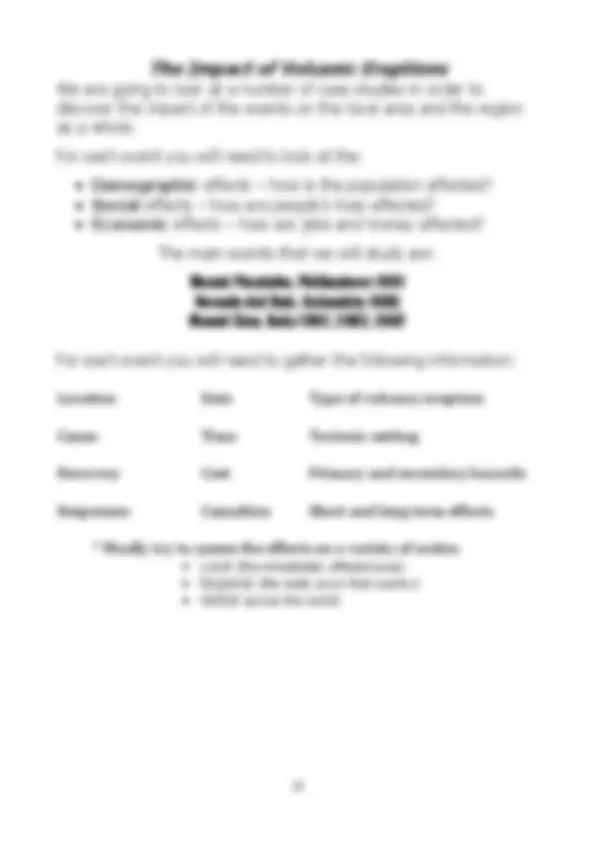
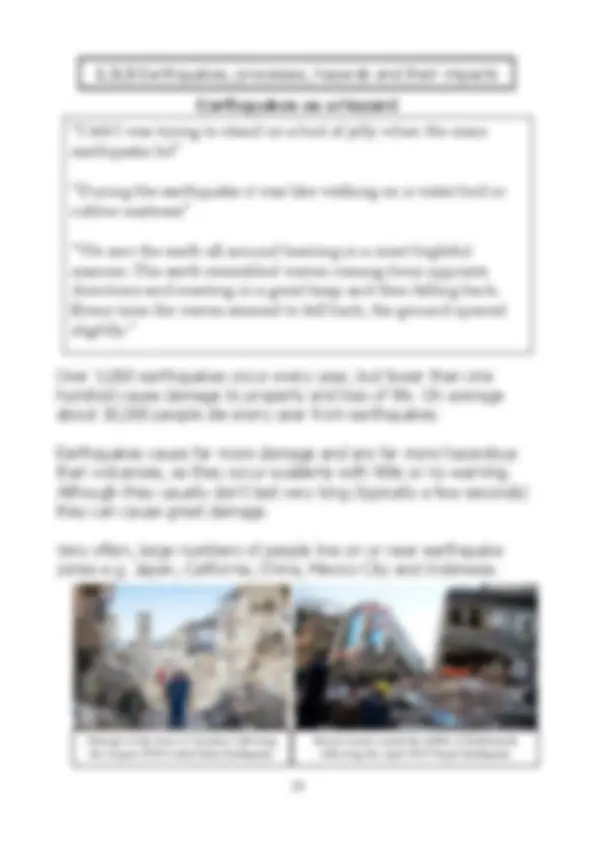
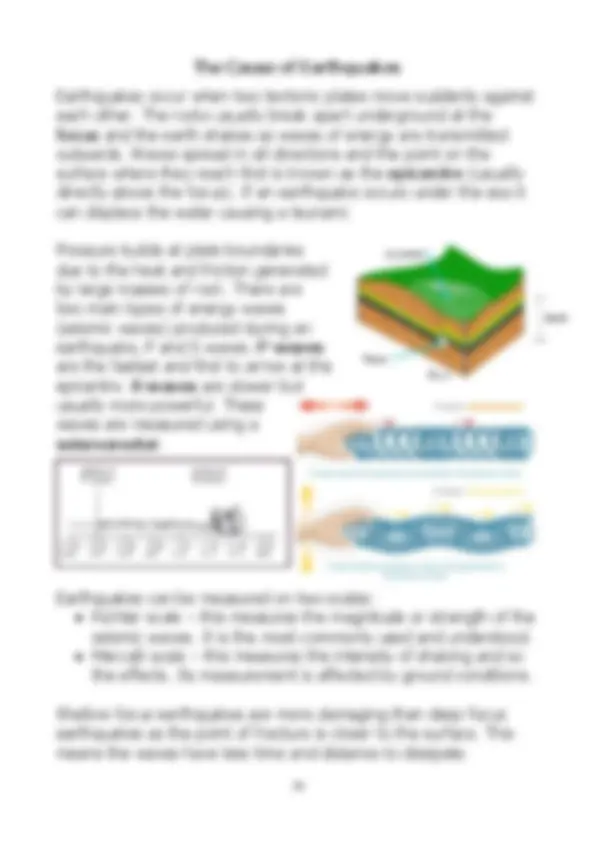
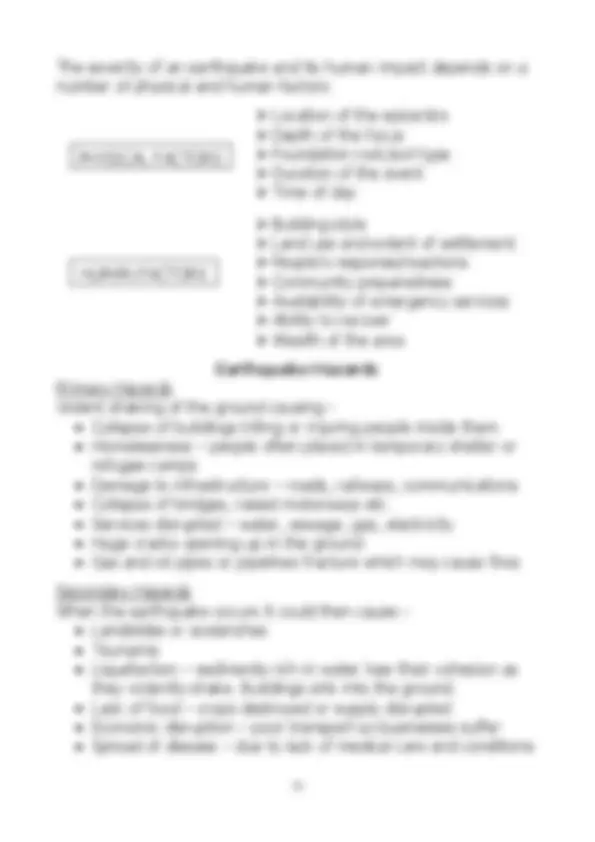
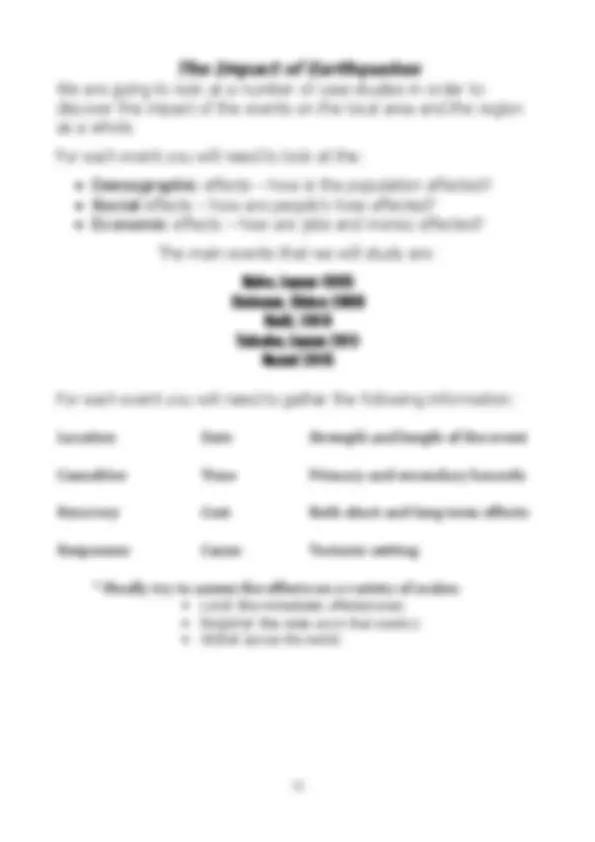
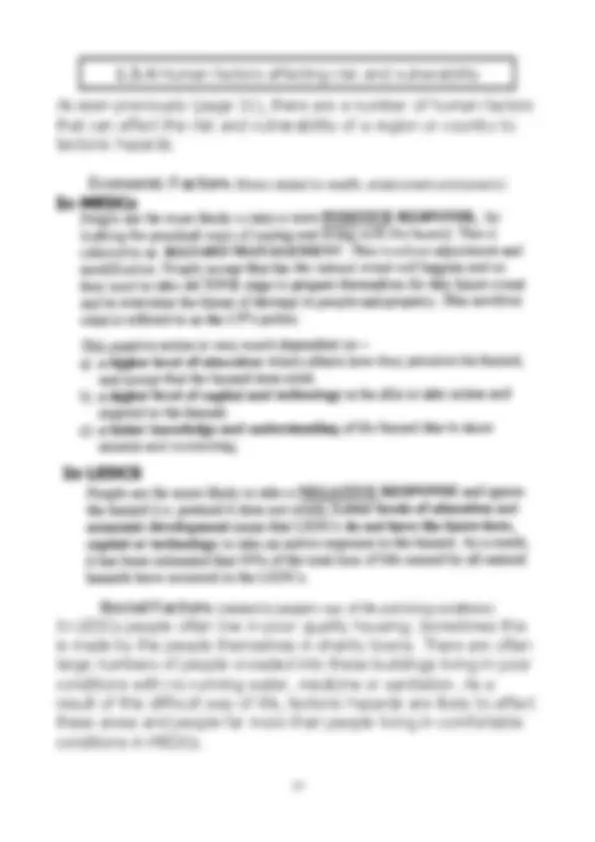
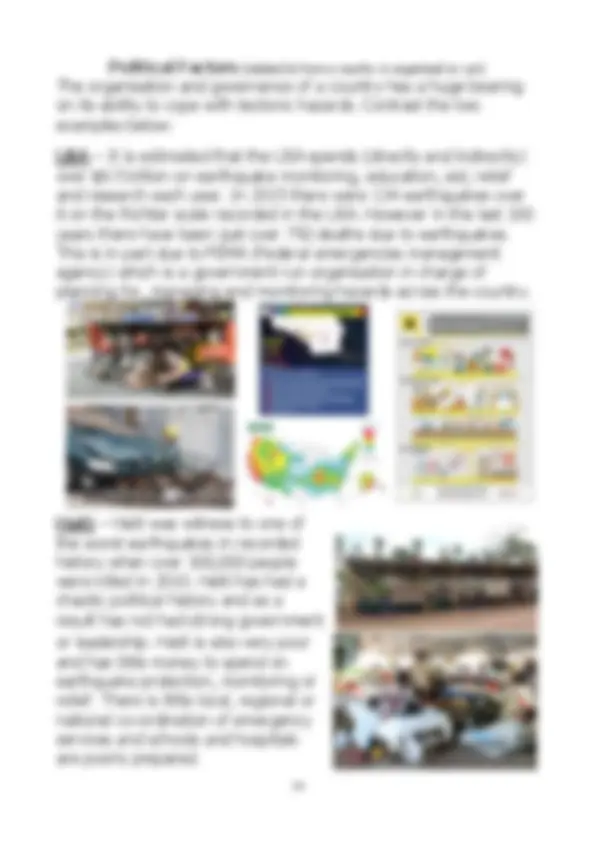
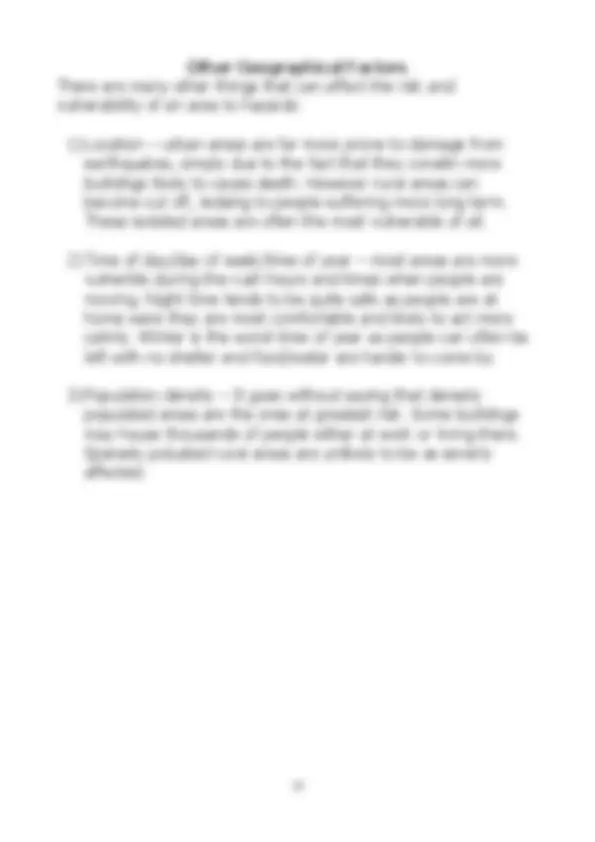
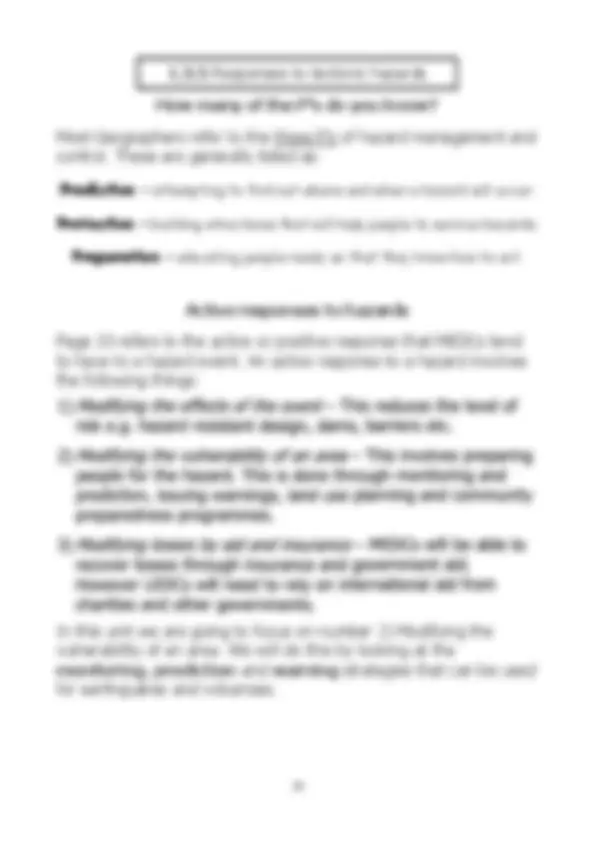
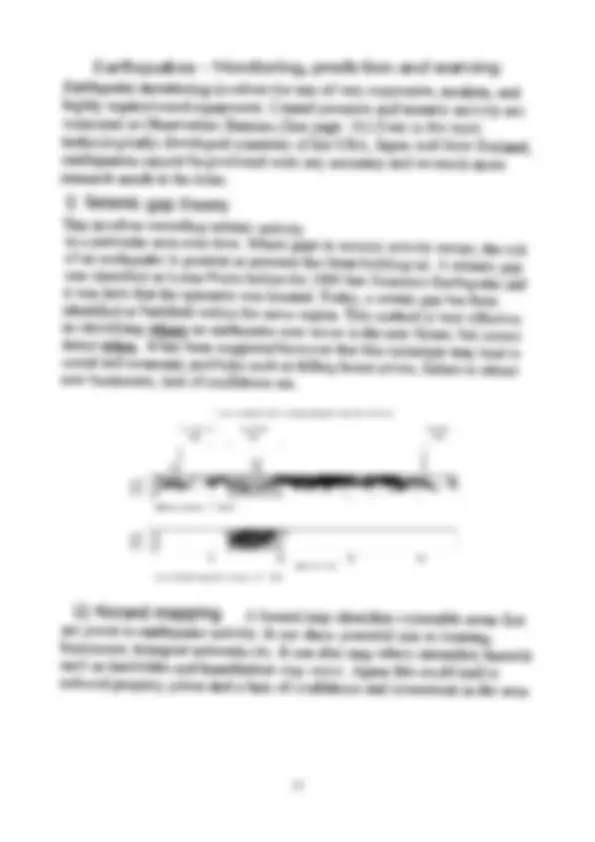
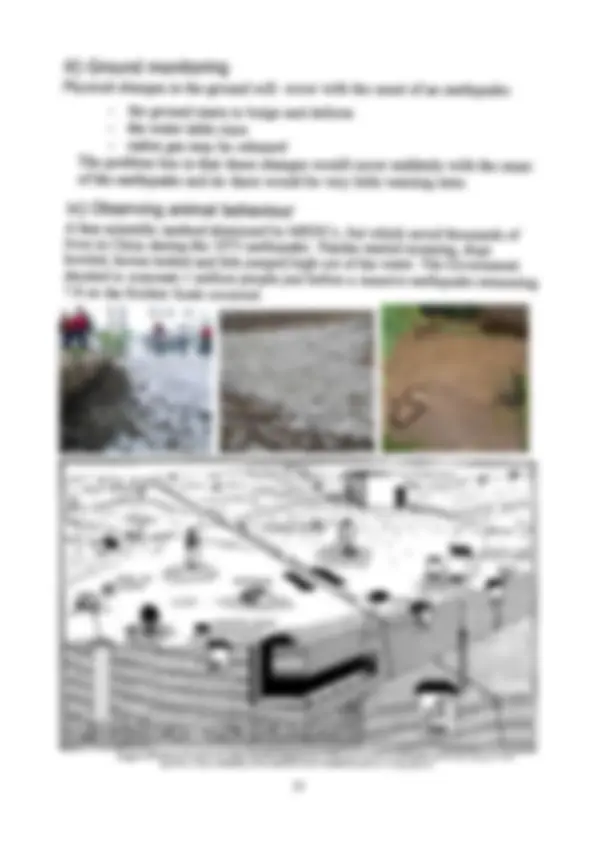
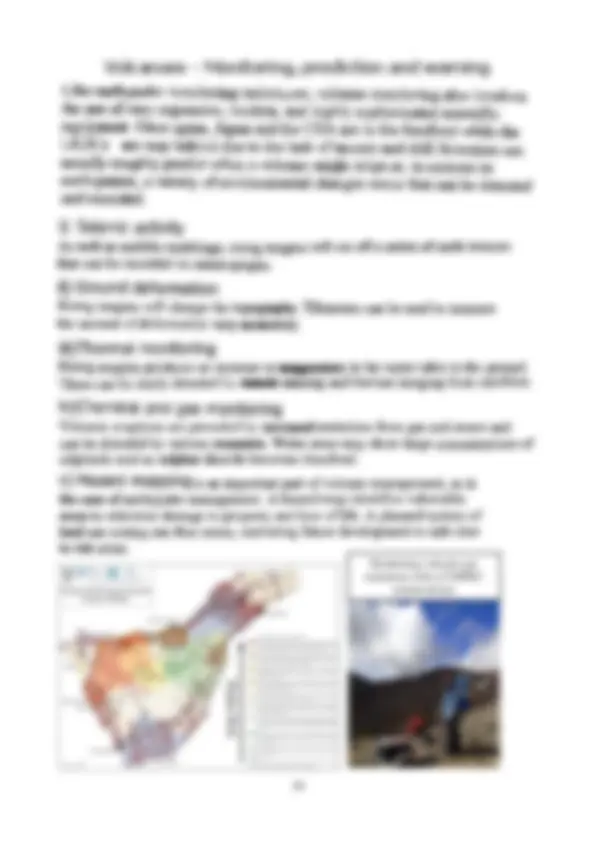
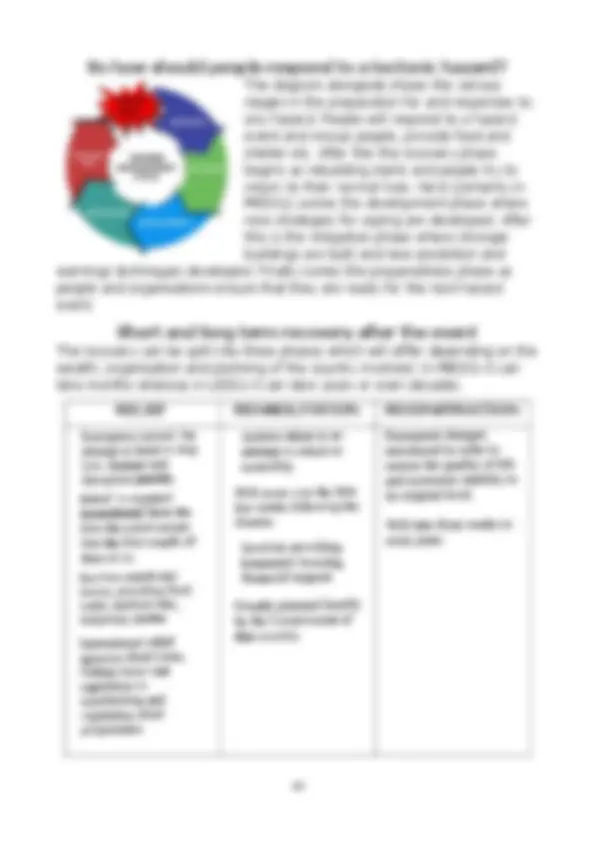


Study with the several resources on Docsity

Earn points by helping other students or get them with a premium plan


Prepare for your exams
Study with the several resources on Docsity

Earn points to download
Earn points by helping other students or get them with a premium plan
Community
Ask the community for help and clear up your study doubts
Discover the best universities in your country according to Docsity users
Free resources
Download our free guides on studying techniques, anxiety management strategies, and thesis advice from Docsity tutors
An overview of plate tectonics and the distribution of volcanoes and earthquakes along plate boundaries. It covers the mechanisms of plate movement, the types of plate boundaries, and the processes and hazards associated with volcanoes and earthquakes. It also discusses the impact of tectonic hazards on people and the built environment.
Typology: Study notes
1 / 41

This page cannot be seen from the preview
Don't miss anything!


































A. Prickett Barry Comprehensive School
Focus Geographical content Revision 1.3.1 Tectonic processes and hazards Characteristics of the Earth's structure including core, mantle and crust and the boundaries between them. Mechanisms of plate movement including internal heating within the Earth, convection currents, ridge push and slab pull. Plate distribution and the processes operating at different margins including diverging, converging and conservative margins; and tectonic activity at hot spots. Global distribution of tectonic hazards and their link to tectonic processes. Characteristics of the physical hazard profile that influence its impact including magnitude (as measured on Mercalli and Richter scales and Volcanic Explosivity Index (VEI), predictability, frequency, duration, speed of onset and areal extent. 1.3.2 Volcanoes, processes, hazards and their impacts Types of volcano including shield, composite and cinder and types of volcanic eruption including explosive and effusive. Volcanic processes and the production of associated hazards including pyroclastic flows, lava flows, ash falls, lahars, jökulhlaups, volcanic landslides and toxic gases. Demographic, economic and social impacts of volcanic hazards on people and the built environment including primary and secondary effects. Local scale, regional scale and global scale impacts of volcanic activity. Use example of one eruption to demonstrate the varied degree of risk and impacts of volcanic activity. 1.3. 3 Earthquakes, processes, hazards and their impacts Earthquake characteristics to include P and S waves, focus, depth and epicentre. Earthquake processes and the production of associated hazards including ground shaking, liquefaction and landslides. Demographic, economic and social impacts of earthquake activity on people and the built environment including primary and secondary effects. Local scale, regional scale and global scale impacts of earthquake activity. Use example of one place specific event to demonstrate the varied degree of risk and impacts of earthquake activity. 1.3.4 Human factors affecting risk and vulnerability Economic factors including level of development and level of technology. Social factors including the population density, population profile (age, gender) and levels of education. Political factors including the quality of governance. Geographical factors including rural / urban location, time of day and degree of isolation. 1.3.5 Responses to tectonic hazards Monitoring, predicting and warnings of volcanic eruptions and earthquakes. Short-term and long-term responses to the effects of earthquake and volcanic hazards (the hazard management cycle).
Patterns of Plates and Plate Boundaries The World map on page 4 shows the distribution of volcanoes and earthquakes around the globe. They are found in similar locations in narrow belts along plate boundaries. A map of the World’s major plates and plate boundaries (margins can be seen on page 5) To understand why they occur here we must firstly understand the internal structure of the Earth, which is shown in the annotated diagram below (not
Lower mantle – hot, dense, solid Asthenosphere – hot, solid with partial melt Lithosphere – solid outer shell Km Lower mantle
The uppermost layer of the Earth is known as the lithosphere. This is formed of the crust and top layer of the mantle. These two layers move together, floating on top of the next layer. The crust is split into two types: Continental (C) and Oceanic (O).The continental crust is thicker but less dense and so ‘floats’ a little higher than the oceanic crust which is denser but much thinner. In the asthenosphere there is tremendous heat and pressure which causes the otherwise solid material to become partially melted. This material can then flow in a series of convection currents much as the wax in a lava lamp does. It is the motion in this layer of the Earth that causes the plates to move. The rest of the lower mantle is hot, dense and mostly solid. The outer core is a layer of rapidly moving liquid metal (mainly iron and nickel). It is thought that the Earth’s magnetic field is generated by strong convection currents in this layer. The inner core is an extremely hot and dense ball of solid metal at the centre of the Earth. It is so dense that it generates the Earth’s gravity field. Decay of radioactive elements in the core generates the heat that drives all of these internal processes. The study of the movement of the Earth’s plates, and the landforms formed as a result of the movement, is called Plate Tectonics. Plate tectonics explains why volcanoes and earthquakes are found in narrow belts or active zones along the boundaries or margins of the plates.
Plate Boundaries and Plate Movement
Plate tectonics has its origins in a theory put forward by German scientist Alfred Wegener in 1915. He suggested that all of the continents of the world were once joined together to form one super-continent called Pangaea. Pangaea then became split into two sections – Laurasia and Gondwanaland, and over the last 200 million years, the continents have drifted slowly to their present positions. Wegener called his theory Continental Drift. This theory was later refined into plate tectonic theory in the 1960s as observations were taken of the sea floor.
Processes Operating Inside the Earth There are a number of processes that govern the plate movements occurring on the surface of the earth, though not all of these are fully understood. This is because most of these processes are happening deep down inside the planet. Where is all the heat from? Tectonic processes are driven by radioactive decay in the core. This decay generates heat inside the earth, which drives convection currents or cells. This convection is largely responsible for driving the plate movement in the crust above. There are two main theories as to how these convection currents actually move the plates. These are illustrated below: 1 2
Transform faulting Mid Atlantic ridge East African Rift Valley
Atlantic Ocean Mid Atlantic Ridge Iceland
Plate Movement Two plates move together (converge) Either: two ocean plates or one ocean and one continental Processes (^) The thinner, denser plate is subducted (forced down) below the other Area of subduction is known as the Benioff zone The subducted plate melts when pushed back into the asthenosphere creating an area of high magma and gas pressure Magma is forced to rise through cracks to the surface (magma is thick, viscous and gassy) An ocean trench with deep water forms at the point of subduction (see diagrams) Volcanoes form as island arcs (O - O) or in range of fold mountains (O - C) Volcanic Activity (^) Large amounts of volcanic activity Cone or composite volcanoes (steep sided) Very violent eruptions Earthquake Activity (^) Large numbers of destructive, violent earthquakes Shallow focus earthquakes Examples (^) Pacific plate subducted under Philippines plate to form Marianas Trench Nazca plate subducted under South American plate forming the Andes fold mountains
Plate Movement (^) Two continental plates move together and collide Processes (^) Plates are too thick and not dense enough to subduct, so the sediments between the plates get compressed and crumple They buckle and fold upwards to form huge chains of fold mountains Volcanic Activity (^) Very little volcanic activity as the plates get thicker and thicker as sediments fold upwards Earthquake Activity (^) The constant movement of the plates towards each other creates pressure Huge faults develop along the collision zone Earthquakes are quite common and can be very destructive as the focus is near the surface Examples (^) Collision of the Indian and Eurasian plates to form the Himalayan fold mountains Mount Everest is still growing, but only at about 2cm per year The African and Eurasian plates moving together and forming the Alps Deep focus earthquakes as plates grind against each other Small amounts of volcanic activity dues to crustal heating Fold Mountains grow in height over time
Plate Movement (^) Two plates slide past each other – either in the same or opposite directions Processes (^) Huge transform faults develop Also patterns of parallel faults can be seen Volcanic Activity (^) Very little Earthquake Activity (^) Intense earthquake activity as plates rub and grind past each other causing friction Many shallow focus earthquakes Examples (^) Boundary between the North American plate and the Pacific plate along the San Andreas fault Between the Antarctic and African plates in the South Atlantic/Indian oceans
The movement of the plates is relative to one another. They are both actually moving to the NW. However the Pacific plate moves faster, so the North American plate appears to go to the SE.
Summary of Plate Boundaries
Hazards and their characteristics All physical hazards including tectonic ones vary but each has a particular set of characteristics. For example an earthquake will typically last for 10-20 seconds but can still cause considerable damage. However a drought may last for months or years, but if plans were in place may cause minimal damage. You are now going to do some research in order to answer the following question (use the prompts in the table below to help you): What are the different factors that will affect the severity of the impact of tectonic hazards? Here are a few ideas to get you started with your research: Factors Notes/Ideas Magnitude How strong was the event measured on the: